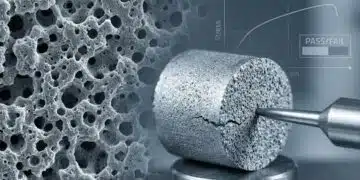Source: Taiyo Yuden news
TOKYO, May 8, 2018—TAIYO YUDEN CO., LTD. has announced today the mass-production of the “PMK432 BJ108MU-TE” (4.5 x 3.2 x 3.2 mm) product, which realizes a capacitance of 1,000 μF for the first time in the world. Applications of this product include smoothing power supplies used in ICT-related devices and backing up energy harvesting devices.
TAIYO YUDEN, which has been continuously leading technology evolution as the first runner in the capacitance enhancement of multilayer ceramic capacitors, introduced the world’s first
4532-size capacitor with a capacitance of 470 μF in 2015. By further improving materials, thin film technology and multilayer capabilities we have nurtured through enhancing capacitance, we have successfully commercialized the world’s first multilayer ceramic capacitor with a capacitance of 1,000μF, which represents a milestone for our development team.
Production of this multilayer ceramic capacitor will commence at the company’s Tamamura Plant (Tamamura-machi, Sawa-gun, Gunma Prefecture, Japan) from May 2018 at a production rate of 0.1million units per month.
Technology Background
With current developments in IoT and capitalization of big data, demand for ICT infrastructure, such as base station communication equipment and servers, has been increasing remarkably. To improve the efficiency of power supplies, such devices are now being provided with switching-type power supply circuits. These power supply circuits use a large number of electrolytic capacitors and multilayer ceramic capacitors in combination as high-value capacitors to smooth output and ensure stable operation of the device.
Generally, multilayer ceramic capacitors have a low ESR and superior frequency characteristics as compared to electrolytic capacitors and are effective as smoothing capacitors for controlling the ripple current in increasingly high-frequency power circuits. Furthermore, the 1,000 μF multilayer ceramic capacitor, with a one-digit higher capacitance than the conventional product range, facilitates the replacement of electrolytic capacitors that are concurrently used with multilayer ceramic capacitors, realizing MLCC only design. And, being smaller in size than electrolytic capacitors, the multilayer ceramic capacitor contributes to a reduction in the mounting area.
TAIYO YUDEN has sophisticated every aspect of elemental technologies such that we are now able to announce a capacitance of 1,000 μF in our product line-up—a first-in-the-world achievement for multilayer ceramic capacitors.
The fundamental electrical characteristics of the 1,000 μF multilayer ceramic capacitor “PMK432 BJ108MU-TE” have been provided through the Easy Power Delivery Network (PDN) Tool that is available on the TAIYO YUDEN website.
In response to market demand, TAIYO YUDEN will continue to make additions to its line-up, typified by expanding rated voltages of high-value multilayer ceramic capacitors.
Application
- Smoothing power supplies used in ICT-related devices and backing up energy harvesting devices.
The characteristics of the 1,000 μF Multilayer Ceramic Capacitor is as shown below.






























